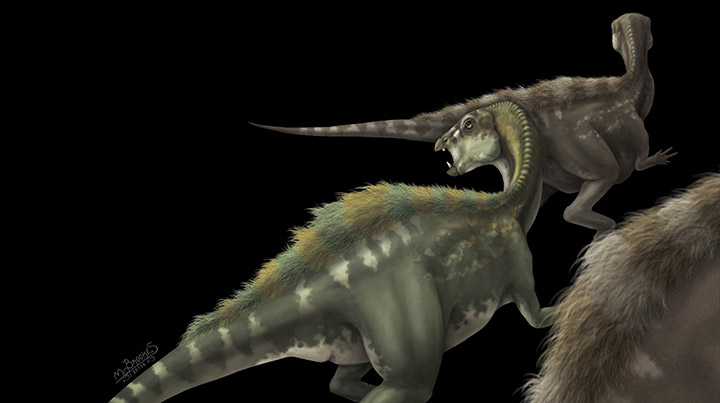From clay replicas to paleo and scientific illustration, three alumni create works of art inspired by dinosaurs
While some children might find the movie Jurassic Park terrifying, 2-year-old Brooke Safken was inspired to begin drawing dinosaurs after she watched the Steven Spielberg film. Twenty years later, the film franchise discovered Safken’s talent for paleo illustration and hired her to create promotional art for the movie franchise.
She’s one of three Colorado Mesa University alumni who’ve combined a talent for art with a passion for dinosaurs.
Safken, 26, who graduated from CMU in 2014, currently teaches art at the university. In 2013, she entered dinosaur drawings in the Mesa County Fair which were noticed – this time by Museum of Western Colorado’s Dinosaur Journey in Fruita. The museum asked to exhibit her artwork which is still on display today.
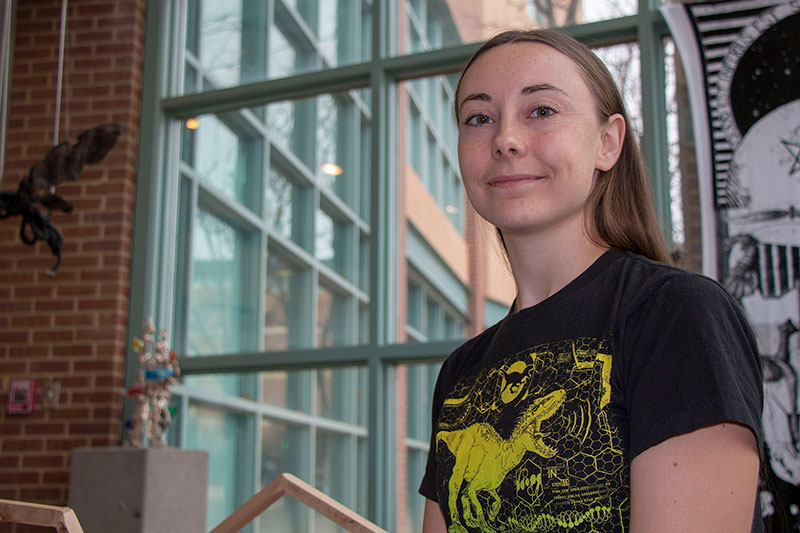
The Fruita Paleontological Area, a one-half-mile square of bentonite clay located between the Colorado River and the McInnis Canyons National Conservation Area, is a landscape rich in fossils dating back to the Jurassic Period. There’s an interpretive sign at the site’s entrance showing Safken’s work — depicting six dinosaurs and their physical environment as it appeared 150 million years ago. These illustrations took Safken nearly a year to complete. She’s currently working on illustrations of 16 dinosaurs for additional signs. The museum, in partnership with the Bureau of Land Management, plans to install the new signage in 2019.
Rachel Moore, who graduated from CMU this past December, with degrees in studio art, graphic design and art history, learned digital illustration from Safken. “She’s an excellent teacher and human being,” Moore said. “She’s one of the best artists I know.”
Learning paleo illustration from Safken also led Moore to the Dinosaur Journey Museum when an employee contacted Moore about submitting her clay sculptures to the museum giftshop. Moore, 28, sculpted a clay replica of a Diabloceratops that is for sale at the museum. She’s currently working on a second dinosaur sculpture of the Utahraptor. Fossils of this genus were discovered near Moab, Utah, in the 1970s and 1990s.
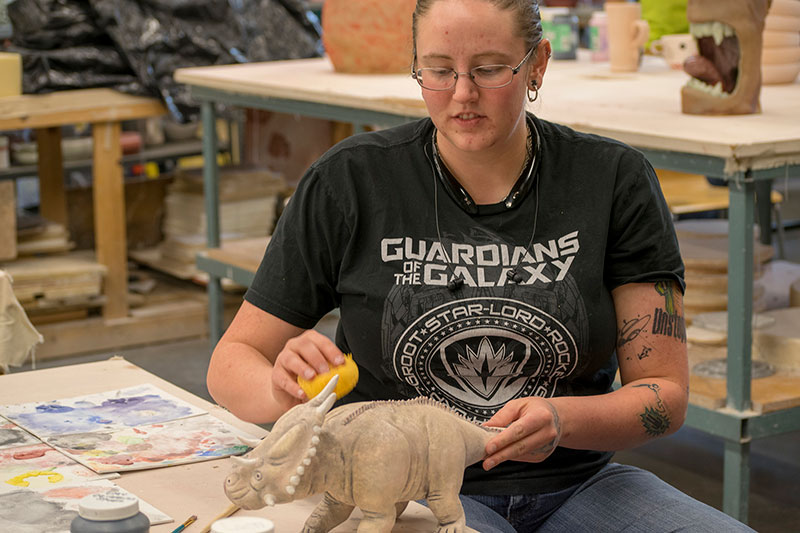
Like Safken, Rick Adleman, CMU Foundation associate director of development, was fascinated with dinosaurs as a child growing up in Delta, Colorado. He remembers when the late Vivian Jones came to speak to his fourth-grade class about the Dry Mesa Quarry, which she and her husband discovered between Delta and Grand Junction (National Geographic featured the quarry discovery in a 1970s magazine edition). The Jones’ were prospecting for uranium when they stumbled upon the quarry. They reported their findings to a paleontologist at Brigham Young University.
“It’s amazing how much paleontology is done by amateurs,” Adleman said. “There has been a huge number of discoveries that are then brought to the attention of professionals.”
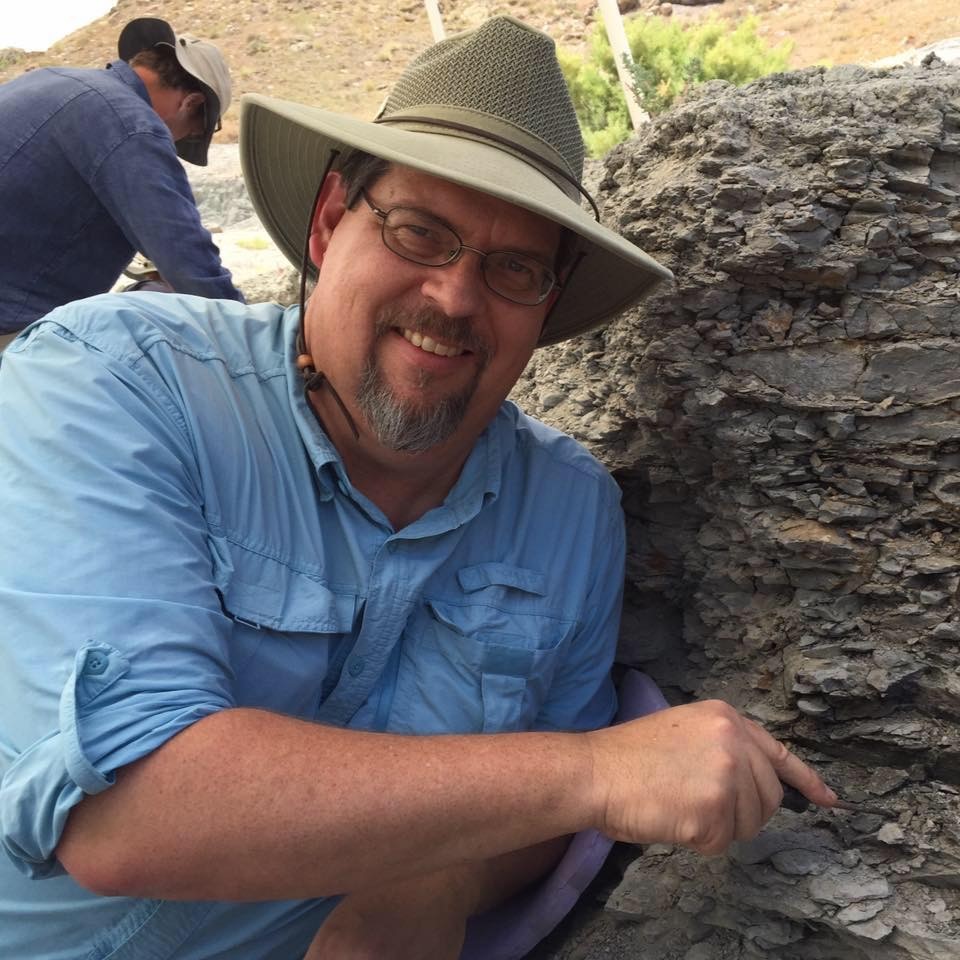
Before coming to work for CMU 17 years ago, Adleman was director of expeditions at the Dinosaur Journey Museum. He later became the museum’s director of operations. There, he met the current State Paleontologist of Utah Jim Kirkland, who served as a mentor and taught Adleman techniques of scientific illustration. Scholarly journals publish detailed, scientific drawings when a new genus is discovered so that paleontologists can compare traits and justify the naming of a new finding. The technical drawings are accompanied by descriptions of where the fossils were found and how they are similar to other dinosaurs.
Adleman created the scientific illustration of the Utahraptor, which was published in the journal Hunteria. “The scientific illustrations are very technical and undergo peer review before being published in scientific journals for scientists to see,” Adleman said.
At 52, Adleman still loves dinosaurs and continues to pursue paleo artwork as a hobby. “I still do a lot of dinosaur illustrations but they’re not as scientific; they’re more artistic.”
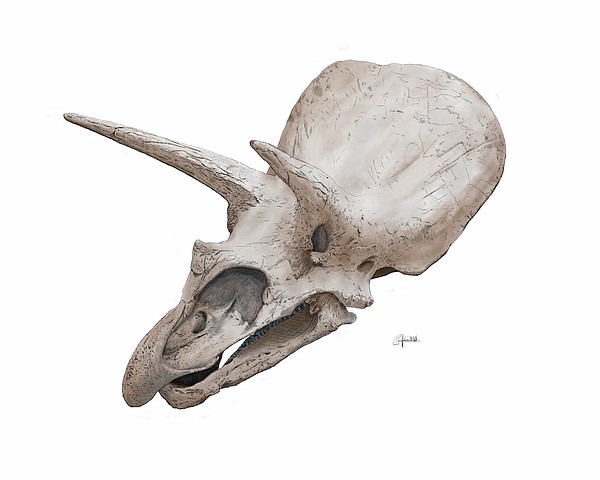
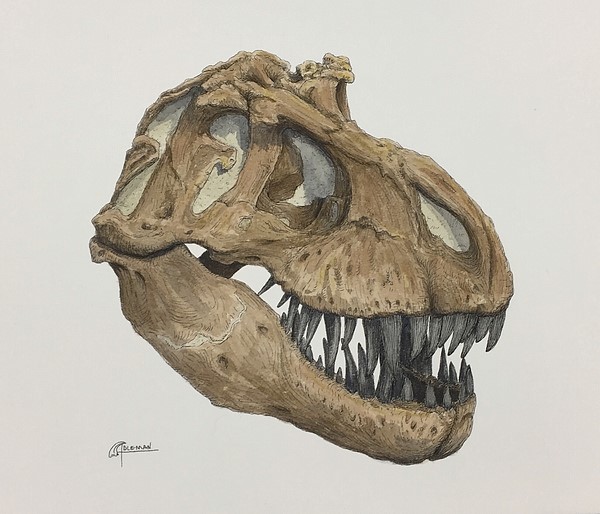
One of his original pen, ink and watercolor paintings is for sale at the Dinosaur Journey Museum gift shop. He also has several digital drawings there of dinosaurs, which resemble prints of scientific illustrations. He donates proceeds from the sale of his works to the museum.
“It’s exciting to find 120 to 140 million-year-old fossils,” said Adleman, who often attends guided digs with his daughter. “When you find something and you’re literally the first person ever to see a piece of this creature that is so different from us…it’s thrilling.”
